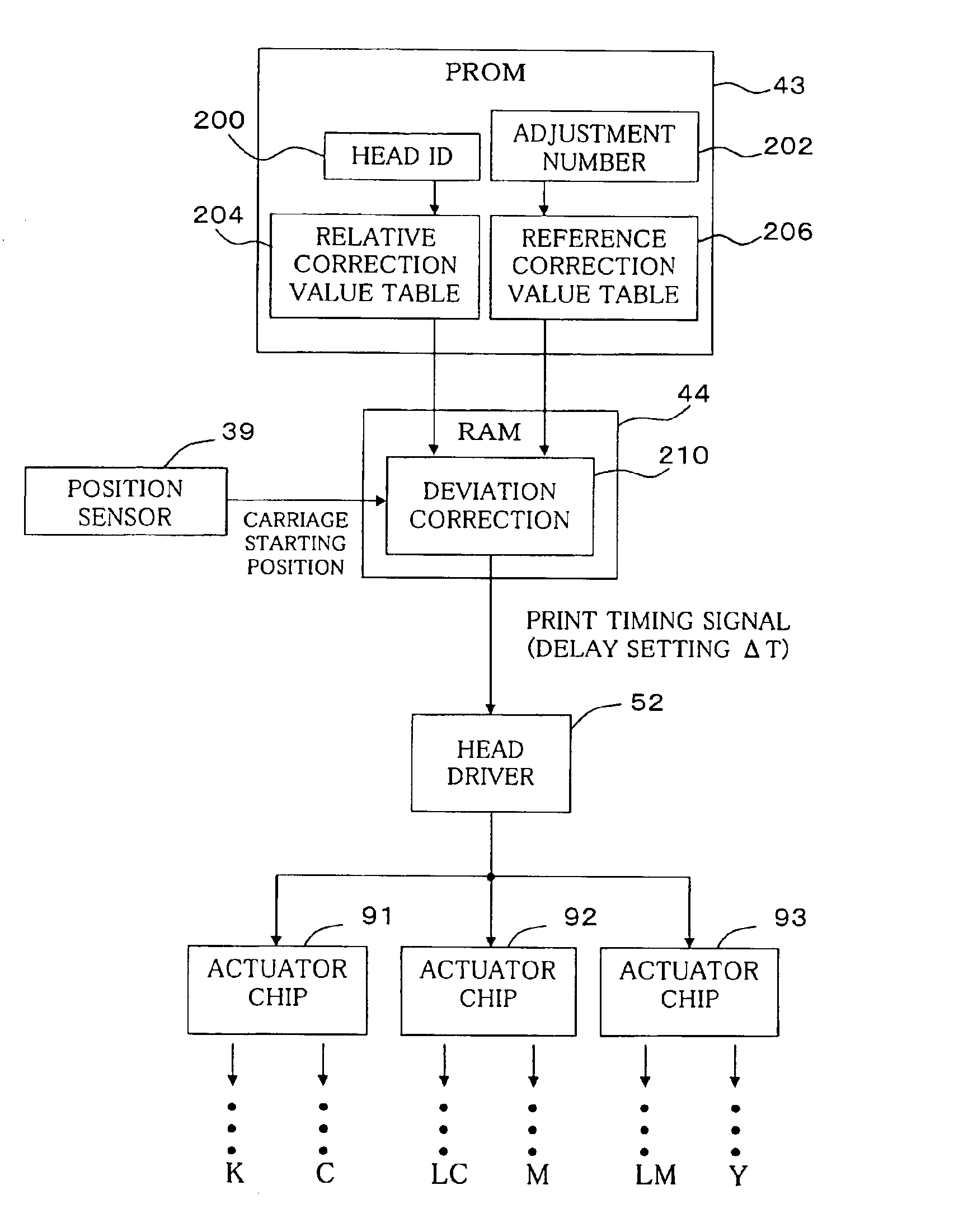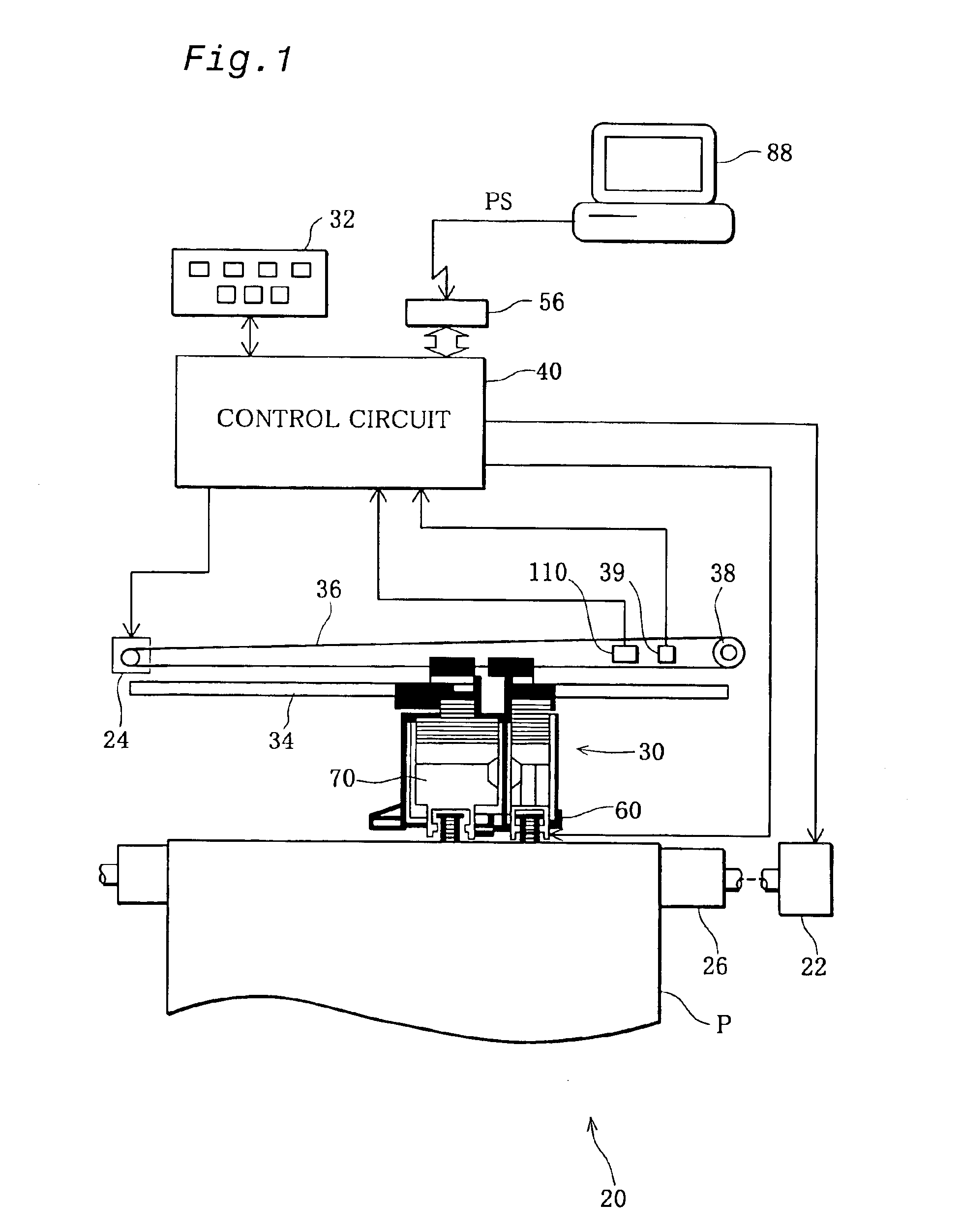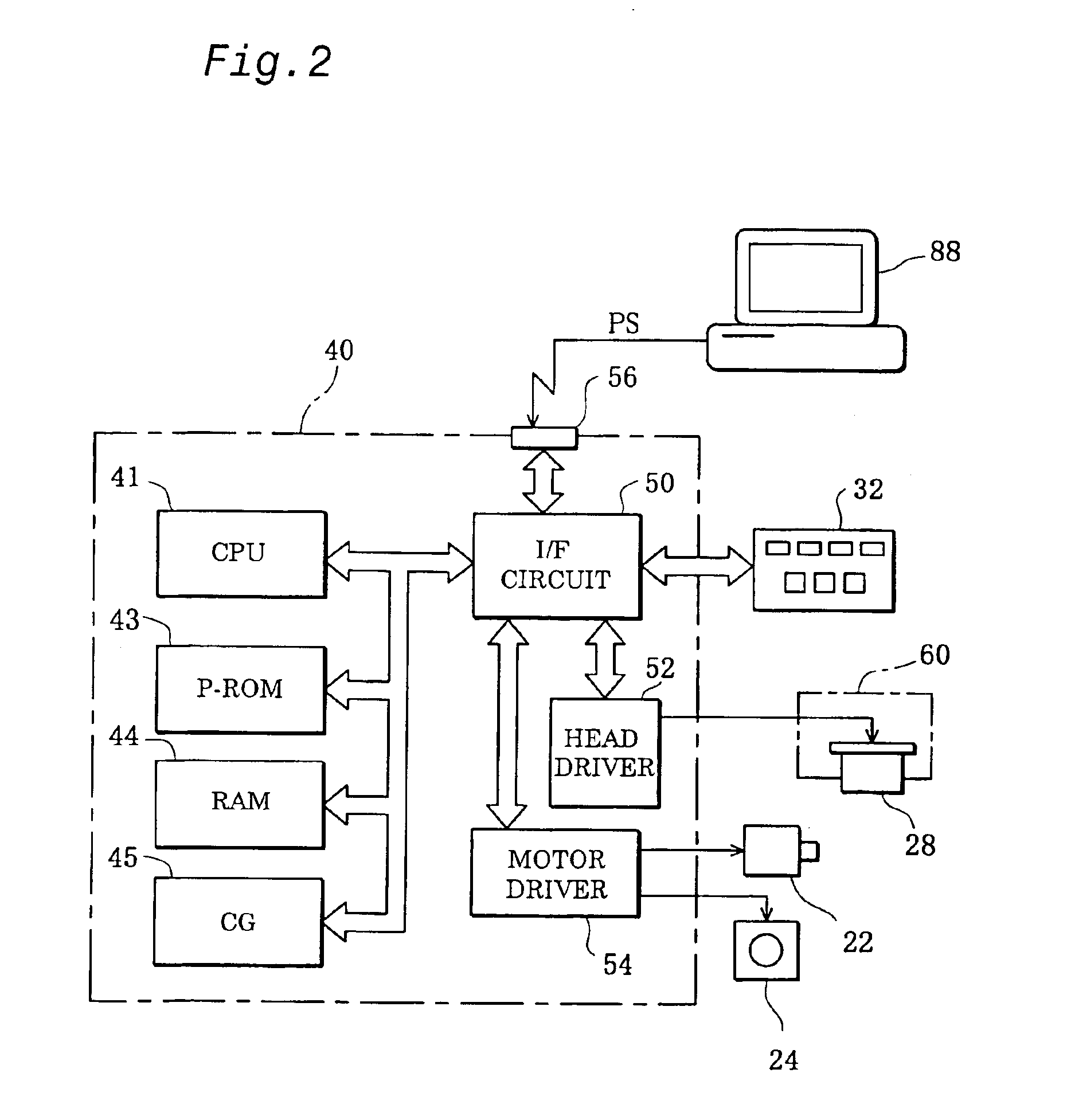Positional deviation correction using reference and relative correction values in bi-directional printing
a technology of position deviation and correction value, applied in the field of image printing, can solve the problems of deviation in printing position between forward and reverse printing passes in the main scanning direction, no correction of deviation in other ink colors, and little consideration of positional deviation between forward and reverse printing passes, so as to improve image quality and alleviate the effect of printing positional deviation
- Summary
- Abstract
- Description
- Claims
- Application Information
AI Technical Summary
Benefits of technology
Problems solved by technology
Method used
Image
Examples
first embodiment (
C. First Embodiment (First Example of Correcting Positional Deviation between Nozzle Rows):
[0090]FIG. 11 is a flow chart of the process steps in a first embodiment of the invention. In step S1, the printer 20 is assembled on the production line, and in step S2 an operator sets relative correction values for correcting positional deviation in the printer 20. In step S3 the printer 20 is shipped from the factory, and in step S4, the purchaser of the printer 20 prints after setting a reference correction value for correcting positional deviation during use. Steps S2 and S4 will be each described in more detail below.
[0091]FIG. 12 is a flow chart showing details of the step S2 of FIG. 11. In step S11, a test pattern is printed to determine relative correction values. FIG. 13 shows an example of such a test pattern. The test pattern consists of the six vertical lines LK, LC, LLC, LM, LLM, LY formed in the sub-scanning direction y in the six colors K, C, LC, M, LM, Y. The six lines were p...
second embodiment (
D. Second Embodiment (Second Example of Correcting Positional Deviation between Nozzle Rows):
[0121]FIG. 21 is a block diagram of the main configuration involved in the correction of deviation during bi-directional printing in the second embodiment. The difference compared to the configuration of FIG. 17 is that each of the actuator chips 91, 92 and 93 is provided with its own, independent head drive circuit 52a, 52b and 52c. Thus, printing timing signals from the deviation correction section 210 can be independently applied to the head drive circuits 52a, 52b and 52c. Therefore, correction of positional deviation during bi-directional printing can also be effected on an actuator chip by chip basis.
[0122]In this second embodiment, too, the row K of black ink nozzles of the first actuator chip 91 is used as the reference. Thus, as in the first embodiment, the reference correction value is determined using a test pattern printed using the the row K of black ink nozzles.
[0123]In this se...
third embodiment (
E. Third Embodiment (Correction of Positional Deviation Between Dots of Different Sizes):
[0129]In the first and second embodiments described in the foregoing, printing positional deviation between rows of nozzles is corrected. In the third embodiment described below, printing positional deviation between dots of different sizes is corrected.
[0130]FIGS. 22(a) and 22(b) illustrate the waveform of a base drive signal ODRV that is supplied from the head drive circuit 52 (FIG. 2) to the print head 28. During a forward pass, in a single pixel period, the base drive signal ODRV generates a large dot waveform W11, a small dot waveform W12 and a medium dot waveform W13, in that order. And during a reverse pass, in a single pixel period, a medium dot waveform W21, a small dot waveform W22 and a large dot waveform W23 are generated, in that order. During a forward pass or a reverse pass, any one of the three waveforms can be selectively used to print a large, small or medium dot at a pixel pos...
PUM
 Login to View More
Login to View More Abstract
Description
Claims
Application Information
 Login to View More
Login to View More - R&D
- Intellectual Property
- Life Sciences
- Materials
- Tech Scout
- Unparalleled Data Quality
- Higher Quality Content
- 60% Fewer Hallucinations
Browse by: Latest US Patents, China's latest patents, Technical Efficacy Thesaurus, Application Domain, Technology Topic, Popular Technical Reports.
© 2025 PatSnap. All rights reserved.Legal|Privacy policy|Modern Slavery Act Transparency Statement|Sitemap|About US| Contact US: help@patsnap.com



